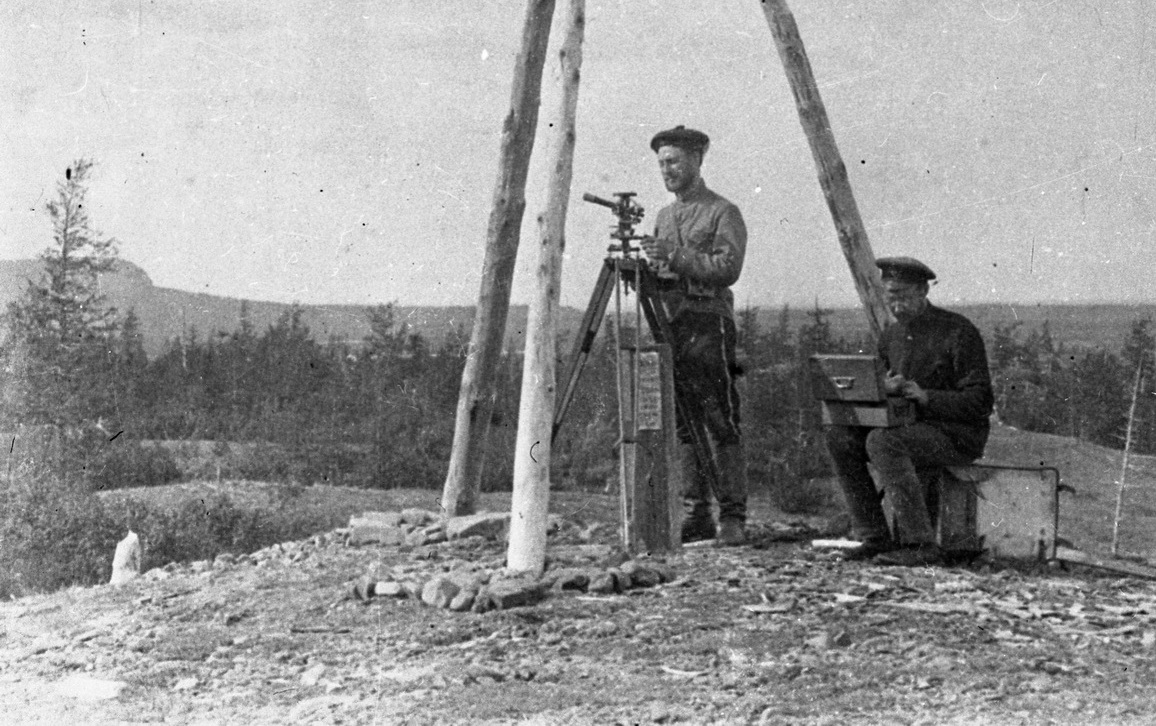#ARCTIC. #SIBERIA. THIS IS TAIMYR. For studying and preliminary exploration of the Norilsk coal deposit, Urvantsev engaged the students of the Tomsk Secondary Technical School, who needed to undergo practical training.
The expedition reached Dudinka on July 8. For nine days, they walked to Norilsk, where they settled in tents next to the hut of the trader Potanin.
As it is written in the reports of the head, during the work, which lasted until September 5, ten cuts were made for coal and reserves were calculated. Along the way, the expedition members contoured two schliers of solid sulfide ores, established a Zero Point, and put 25 kilometers of the Norilsk region on the map.
At the same time, they gave new, familiar to us today, names of mountains and valleys: Rudnaya, Schmidt (the Norilsk people call it Schmidtikha), Bear Stream and others.
In 1921, another 59-person geological exploration expedition led by Urvantsev built the first house in Norilsk, which has survived to this day.
The plans of the expedition were to build not only the first housing, but also outbuildings: a warehouse, a bathhouse and even a stable. The prudent Urvantsev found building material in the Haraelah area back in 1920. At the same time, the residents of Dudinka received an order to manufacture and bring to Norilsk a thousand logs measuring about six meters by 18 centimeters. Interesting, that the Komsevmorput organization which financed the work, planned to lay a narrow gauge track from Dudinka to Norilsk in 1921.
The head of the expedition chose the site for the first house for 10–12 people together with the manager and the supervisor of the construction group, a Tomsk student-technologist. In his book, The Discovery of Norilsk Urvantsev wrote, “the place was chosen 150 steps to the northeast of the astro station (Zero Point) on a flat area that does not require planning.” A deaf cold canopy with a door to the street relied to the house, so that “it would not be covered with snow during a blizzard”.
In August, construction gradually ended. The members of the expedition who remained for the winter had to dig a hole in the house, install heating with fireplaces (the stove had already been made), and make heaps.
The same thing had to be done in the second dormitory for 30–40 people near the Coal Brook. That building, like the bathhouse with a warehouse, was less fortunate. The sawmen did not have time to prepare the required number of boards, so the dormitory was still without a roof by September, the warehouse remained in the old place, and the old log house was adapted as a smoke bath.
For the first wintering in 1921/22, seven members of the expedition, headed by Urvantsev, remained in the First House of Norilsk. In subsequent years, members of other expeditions lived in the house. According to the Norilsk Museum, in 1947 there was a store in the house, and in the 50s and 70s it again became a residential building.
The history of the house-museum dates back to 1978, when it was given the status of a branch of the Historical and Production Museum of the Norilsk Combine. In 1985-1990, it was part of the memorial complex to the Discoverers and First Builders at the Zero Point, where the ashes of the Urvantsevs were first buried.
On the 100th anniversary of Nikolay Urvantsev’s birth, the house from the foot of Mount Rudnaya was moved to the center of the city, to the museum, and the ashes of the first Norilsk residents were reburied on Golikovo cemetery.
On July 28, 1921, the first coal adit was laid on the Schmidt Mountain, and a month later, when the first passed ten meters, the adit was laid on the second layer.
This coal was used to heat the first winterers. For the first wintering (until May 16, 1922), seven people remained with Urvantsev. The adits continued to operate and supply the expedition with fuel throughout the winter.
In the last issue of the History spot photo project, we talked about the fact that 70 years ago a famous russian actor Innokenty Smoktunovsky left Norilsk forever.
For other issues of our photo project about the history of the city and the combine, go to the History spot section.
Follow us on Telegram, Instagram and Facebook.
Text: Valentina Vachaeva, Photo: Nornickel Polar Division archive









